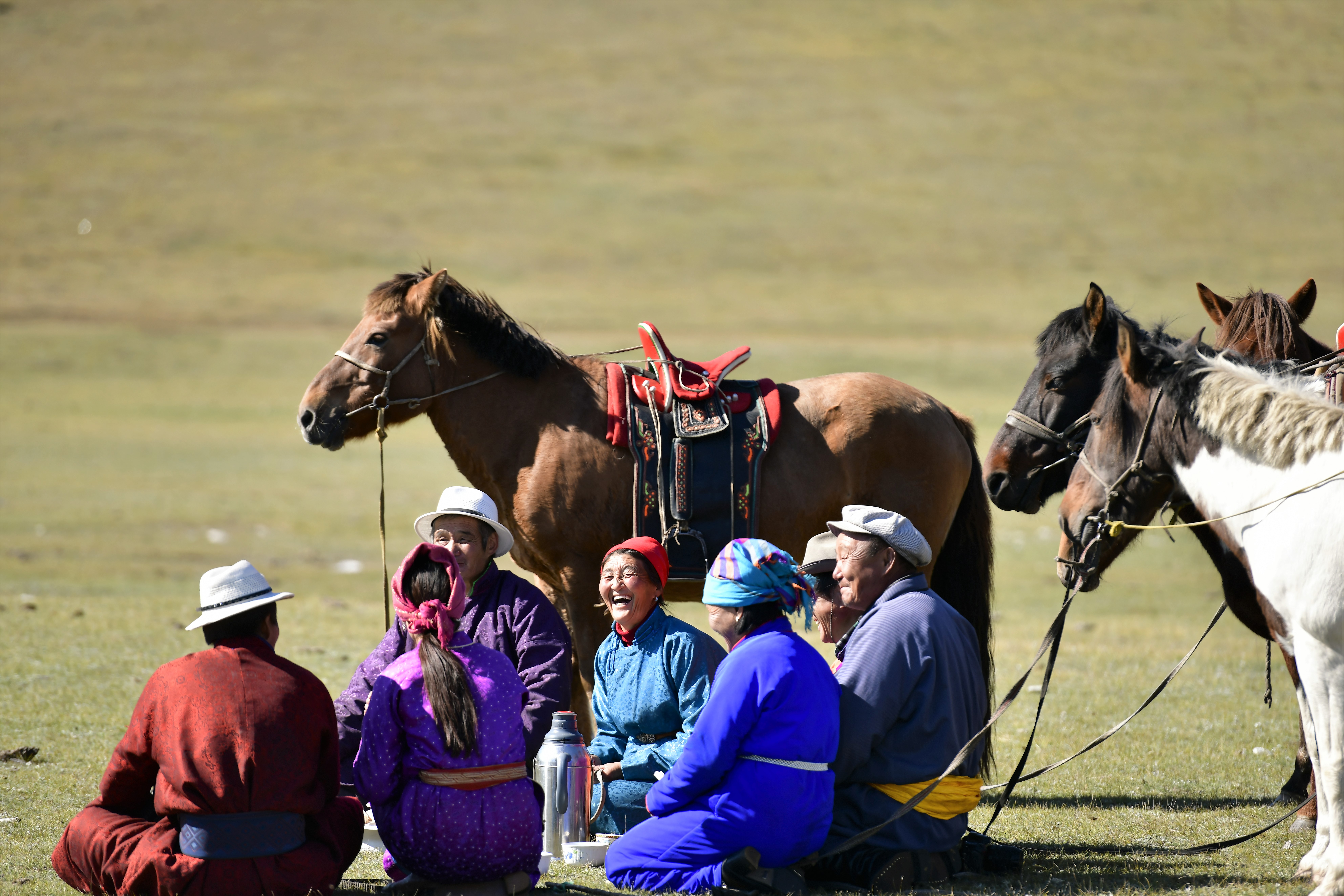Tackle Climate Change

The Natural Climate Solution in Mongolia
Mongolia is the world’s 18th-largest country by area. Its vast and intact natural landscape offers huge potential to reduce greenhouse gas and spark an economic recovery. We are supporting local communities and herders to invest in and build a low-carbon, climate-resilient future, helping them to be better prepared to adapt to current and future climate impacts.
TNC Mongolia has developed a strong program of biodiversity protection, support for herder community land management rights, and built capacity and economic development opportunities for herding communities focused on sustainable rangeland management. Building on this history, we are launching pilot projects on Natural Climate Solutions. As TNC Mongolia develops strategies for accelerating Natural Climate Solutions on the ground, our organization will work to support community governance, land-relationship planning, stewardship and economic development.
What are Natural Climate Solutions?
Natural climate solutions involve protection, management, and restoration activities that avoid greenhouse gas emissions and/or increase carbon storage across forests, wetlands, grasslands, and agricultural lands. Cost-effective natural climate solutions employed globally have the potential to mitigate approximately 11 gigatons of carbon dioxide - equivalent greenhouse gases annually, one-third of what’s needed by 2030 to stabilize the climate, when paired with significant fossil fuel emissions reductions.
Pilot projects in Mongolia
In the early years, our efforts will create the conditions for accelerating Natural Climate Solutions—for example, supporting local community authority, investing in Community-led conservation, and introducing policy incentives to encourage new agriculture and forestry practices.
We are currently implementing the following two projects to test a model in the area of Northern Mongolian Mountain steppe with peatlands (Bayanzurkh soum of Khuvsgul aimag) and in the Eastern Mongolian Grasslands (Toson Khulstai Nature Preserve Area).
- The Natural Climate Solutions Prototyping Network project aims to support peatland conservation activities of herding communities in Bayanzurkh soum, where highest stock of the peatland, by providing new information on peat extent, importance and updating national peatland map.
- A model project to increase carbon sequestration by improving the rangeland management through reducing grazing intensity of the Toson Khulstai Nature Preserve Area, located in five soums of Dornod and Khentii provinces in eastern Mongolia.
Want to fight climate change? Then we need to phase out fossil fuels—and work more with nature.
Improving the mapping of peatlands throughout the entire country of Mongolia
Peatlands not only stand out as one of the Earth’s primary natural carbon reservoirs, accounting for approximately 30% of the global terrestrial carbon storage, but also play a pivotal role in water regulation, biodiversity preservation, and sustaining livelihoods. In Mongolia, these vital ecosystems now only cover about 1% of the country’s land area, decreased by half over the recent decades, largely due to the impacts of climate change and excessive grazing.
The conservation of existing peatlands and the restoration of these ecosystems through management practices serves as a powerful natural climate solution. The Natural Climate Solution Prototyping project is dedicated to realizing these objectives in collaboration with community-based organizations, evaluating the impacts of seasonal grazing on peatlands in the Bayanzurkh soum of Khuvsgul aimag, a region recognized for its abundant peat resources and designated as one of the top 10 priority peat locations. Furthermore, the project aims to improve the mapping of peatlands throughout the entire country of Mongolia, reassessing the coverage of these ecosystems for future conservation efforts.
Quote: PhD. Saruulzaya Adiya

Research to determine the distribution of peatlands and their boundaries in detail is important to create a scientific basis for long-term sustainable and proper use and protection of peatlands.
PhD. Saruulzaya Adiya
Head of Permafrost Department, Institute of Geography and Geo-ecologyPeatland Research Findings
The new report of Peatland Distribution, with a primary aim to improve the dataset for country-scale peatland mapping, involved the collection of soil samples from 600 sites across 20 study areas in Mongolia, spanning peatland and permafrost regions. Measurements and calculations were conducted for Soil Organic Carbon content (%), peat thickness, soil respiration, above-ground biomass, and emission factors, with soil temperature and moisture also recorded. Based on these findings, two methods were used (Object-based classification and Pixel-based classification) to map the distribution of peatland in Bayanzurkh soum, which will be the groundwork for expanding the mapped data to a country-scale level.
Key findings
The main study area, Bayanzurkh soum, was confirmed to be an area of great importance, with abundant peat sites.
-
447
Based on the Soil organic carbon content results, 447 out of 600 sites were identified as PEAT.
-
Crucial
The main study area, Bayanzurkh soum, confirmed to be an area of great importance, with abundant peat sites, peat thickness and above-ground biomass.
-
26.2%
According to the Object-based classification method, 26.2% of the area of Bayanzurkh soum, Khuvsgul province was peatland.
Natural Climate Solution Prototype delivers social and environmental outcomes that help ecosystems flourish and communities thrive
Updated national-scale peatland distribution map
By updating the peatland distribution mapping, not only changes in the peatland area can be assessed, but also the need for further conservation efforts can be highlighted. This map is to be done based on the Bayanzurkh soum level map.
Grazing pattern study
By evaluating the impacts of seasonal grazing on peatlands in the Bayanzurkh soum of Khuvsgul aimag, a bottom line for further conservation efforts can be established.
Raised public awareness of peatland
By increasing awareness among herders in the Bayanzurkh soum, a key region for peatland distribution, we aim to foster collaboration with herders and community-based organizations. This effort will strengthen our commitment to peatland conservation and sustainable management.

Supporting Herder Communities through improved understanding of Peatland Dynamics
Updated country-scale mapping is needed for assessing the changes of peatland area and understanding of further conservation efforts across Mongolia. This project will not only contribute the conservation efforts aimed at peatlands, but also encourage locals from Bayanzurkh soum in participating in our projects and inspire them to make conservation efforts independently.
Grassland ecosystems, covering approximately 40 percent of the Earth’s land surface, stores one third of the terrestrial carbon stock. As a result, grasslands stand out as significant soil carbon sinks globally. The health of rangeland and the diversity of plants are pivotal factors in the formation and maintenance of soil organic carbon (SOC). However, the potential for carbon sequestration is greatly threatened by overgrazing and the impacts of climate change. Particularly, arid, and semi-arid grasslands are highly sensitive to climate change.
The Mongolian grassland stands out as one of the largest intact rangelands globally, serving as a vital habitat for wildlife while also functioning as a significant storage of soil organic carbon (SOC). The preservation and sustainable management of the natural Mongolian grassland is crucial to the enhancement and conservation of the soil organic carbon stock. Traditional livestock grazing is the main use of the vast Mongolian grasslands. Within this ecosystem, increasing of soil organic carbon is strongly linked to factors such as grazing intensity and rangeland management practices. Thus, responsible and balanced management of these elements is crucial for maintaining the ecological state and carbon storage capacity of the Mongolian grassland.
Grassland carbon pilot project in Mongolia
TNC Mongolia is set to launch a pilot grassland carbon trade initiative for community-based organizations (CBOs). Based on similar successful smaller-scale pilots, such as those executed by Plan Vivo covering a 77,482-hectare area in other parts of Mongolia, the NCS-Grassland Carbon project is being implemented across a vast expanse of 1,858,000 hectares. The area encompasses the eastern steppe grassland and the northern mountain steppe area, including highland peatlands (Map 1). The project emphasizes sustainable land use practices aligned with a rangeland management plan.


Reducing grassland greenhouse gas emissions through a partnership with the local community
This activity is enabling pilot area conditions to make carbon finance more accessible for herder communities faced with a trade-off of sacrificing income to sustainably manage their pasturelands. If successful, the area could be expanded to 10-million-hectare rangeland through synergies of ongoing project for Community Lead Conservation.
By the year 2030, the objective is to establish and strengthen 300 Community-Based Organizations (CBOs), benefiting a total of 6,000 households and approximately 15,000 people. These CBOs will secure management rights to their respective rangelands. The anticipated outcome of this effort is the mitigation of 240,000 tons of carbon dioxide equivalent (t CO2e) per year through effective sequestration practices implemented in rangelands managed by at least 60 of these CBOs. This ambitious goal not only aims to strengthen the community but also contributes significantly to the mission of greenhouse gas reduction and sustainable land management.


